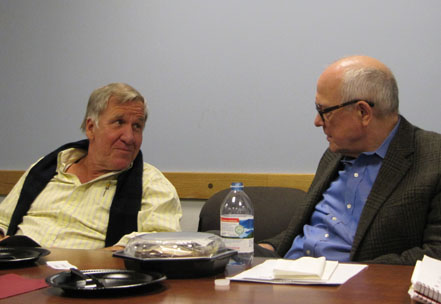Event
Ex-NYT reporter sees his book on death penalty in print after decade of obstacles

February 28, 2012 — After nearly 12 years of obstacles, Raymond Bonner‘s book, Anatomy of Injustice: A Murder Case Gone Wrong, was published by Knopf. Bonner spoke to the Shorenstein Center about his journalistic process in writing the book and getting it published in spite of difficulties.
Bonner, a former investigative reporter and foreign correspondent for The New York Times and the International Herald Tribune, tells the story of an innocent man unjustly placed on death row and the young lawyer with an inauspicious past who fights for his life. What Bonner discovered in his research was that innocent people rarely end up on death row, but in this case, there was “absolute, unequivocal innocence,” coupled with an extraordinary lawyer, he said.
Bonner said that his reporting faced rejection from newspapers who told him that there had already been too many stories written about the death penalty. He was rejected by book publishers once they learned that a similar book was being written by a best-selling author. Yet Bonner said he could not give up on the project: “If you’re a journalist and you really believe in something, you sometimes have to stick with it against all odds,” he stated. “You can only write a book when you cannot not write the book…it’s got to be in your gut.”
Editors also posed problems to Bonner’s investigation. Wanting to emulate the success of the book Dead Man Walking, some of Bonner’s editors encouraged him to focus on the relationship between the accused and the lawyer. But Bonner said he refused to conform the facts of the story to fit the editors’ idea of what the story should be. Investigative journalist and Shorenstein Fellow Ron Suskind agreed with Bonner that editors often try to dictate the direction of a story, instead of “trusting truth and following it wherever it goes.” Rather than following an editor’s “pre-existing notion,” Suskind continued, “when you go off the grid…that’s when it turns good.”
By Janell Sims, Shorenstein Center.
Photos by Heather McKinnon, Shorenstein Center.